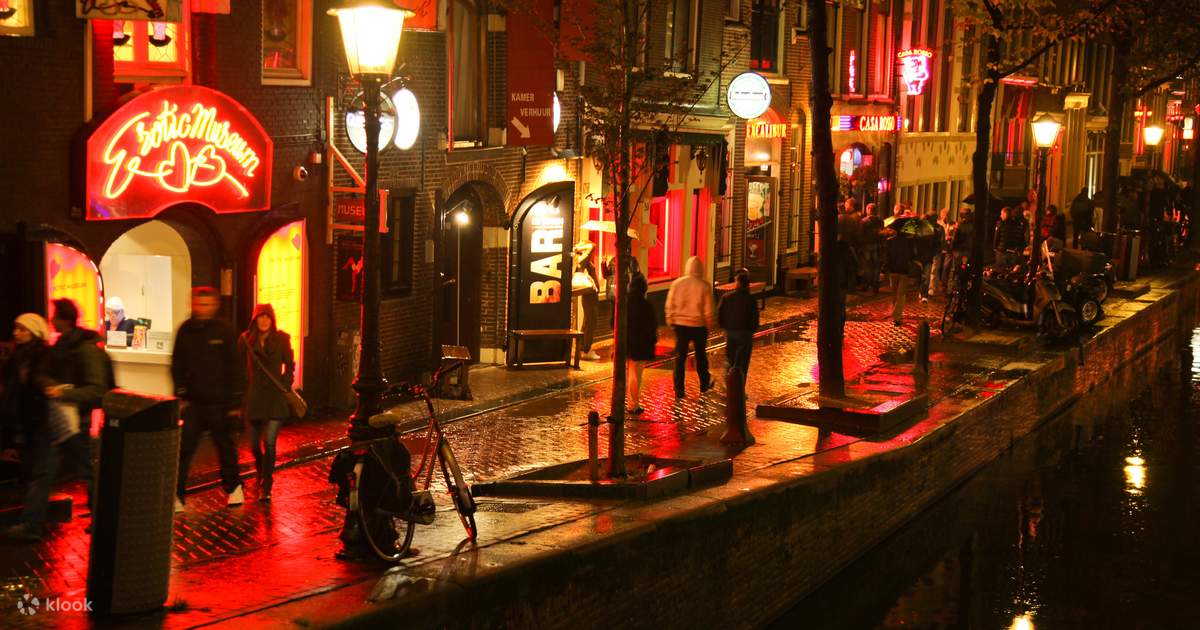RED-LIGHT DISTRICT OF AMSTERDAM – THE RED STREET THAT IS ACTUALLY RED

Having a “Damn” good time is always on your itinerary if you are headed to the City of Windmills. Amsterdam, the capital city of Netherlands, is called the Venice of the North for a reason. It has always lured tourists with its many picturesque canals, bridge archways, floating flower markets, leisurely evenings and the crooked and narrow canal houses, that line the streets. However, boat rides and street strolls are not the only catch in Amsterdam.
The city is also known for its Red Light District, the only red street that actually reflects on its streets, the colour in its name. But you need to rush if you have it on your travel list, for the visage of the area is proposed to change soon. A multi-storey erotic centre is soon expected to replace the red-light district.
For those who have just a quaint idea of what the red-light district may represent, you would be in for a surprise to know how divulged the actual scenes are, from the usual notions. The streets may be narrow, but not shady or scary for an outsider. They are not dark alleys where shame or stigma lurks. In fact, they are lit – lit in red, to simply and silently convey that they are open for business. No verbal soliciting, no one on the streets to drag you in – they merely put up a mannequin-like depiction, behind the glass windows for anyone wanting the service. This may be the only like place in the world where you find couples, students or even families walking around, for the streets are completely safe.
The street turned red when the verbal soliciting of the yester years, that targeted the weary mariners, turned a menace and nuisance for the villagers. The government interfered and instead of shutting the place down, the system was altered. Women posed behind a curtain with a red light reflecting their outline for prospective business. This meant that the streets were empty and silent, but simply lit to convey everything that needed to be conveyed.
Locally known as De Wallen (“The Walls”), the place has managed to keep up with the times. You can now see not just red lights, but even blue lights in the lanes, where the red lights are used by cisgendered sex workers while blue is used by the transgender sex workers. This way it helped the clients on easily finding the kind of service they were looking for.
The Pleasure District is open 24/7 although not everything is accessible at all times. But that’s not the most interesting aspect about the place. Ironically, the place houses the oldest church in the whole of Amsterdam, and the world’s first stock exchange was set up in these very streets, as long ago as in the 17th century. It would be intriguing while at the same time shocking to know that the oldest house of Amsterdam is also situated in the very same area and is now a Gay Fetish Club with access only for men. From the first condom shop in the world to the narrowest street (Trompettersteeg), the district never ceases to raise your eyebrows. A collection of museums on quite specific subjects of sensuality and the history of the District are also a must-visit. If you think the list is over, the facts do not end there.
It is said that the wife of the famous Dutch artist Rembrandt, Saskia van Uylenburgh, is buried at the Old Church in the Red Light District. Furthermore, the place houses a protestant church, a catholic church and a Budhist temple, which may come as a surprise owing to what the district symbolizes to the world.
The “Coffee Shops” in the area is not your traditional café. They are the cannabis shops, in the very place where the use of tobacco, however, is restricted and sometimes even prohibited. Similarly, given the fact that there was a time when Amsterdam used to have a legal cocaine factory, you may not believe us when we say that consumption of alcohol publicly on the streets is not allowed in the Red Light District.
Much true to the general demography of the country of Netherlands, there is a substantial and significant presence of women even in the area. From a primarily female-centric arena, the district’s current mayor and the richest citizen of the country are all women.
Thus, the city of Amsterdam may be just a Venetian semblance for the world, but this world of paradox that lie tucked away in a hushed nook of the city is what makes the city one of its kind. It is a true mark of not just re-defining and re-constructing age-old misnomers, but also about shattering and normalising a stigmatised social set-up and sect.

